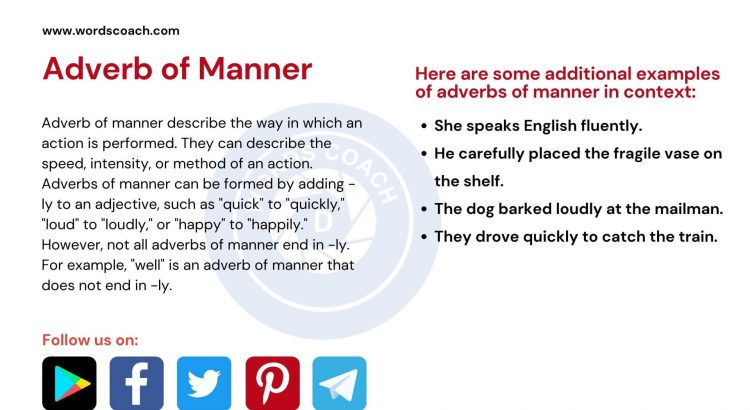Adverb of manner describe the way in which an action is performed. They can describe the speed, intensity, or method of an action. Adverbs of manner can be formed by adding -ly to an adjective, such as “quick” to “quickly,” “loud” to “loudly,” or “happy” to “happily.” However, not all adverbs of manner end in -ly. For example, “well” is an adverb of manner that does not end in -ly.
Adverbs of manner can be placed in different positions in a sentence, but they usually come after the verb. For example, consider the sentence “She sings beautifully.” In this sentence, “beautifully” is the adverb of manner, which modifies the verb “sings” and describes how she sings.
Adverbs of manner can also be used to modify adjectives and other adverbs. For example, consider the sentence “He is very fast.” To add an adverb of manner, we can say “He runs very fast.” In this sentence, “very” is the adverb of degree, and “fast” is the adverb of manner, which modifies the verb “runs” and describes how he runs.
Here are some additional examples of adverbs of manner in context:
- She speaks English fluently.
- He carefully placed the fragile vase on the shelf.
- The dog barked loudly at the mailman.
- They drove quickly to catch the train.
Adverbs of manner are an important part of the English language that allow us to describe how an action is performed. They can add detail and precision to our writing and speech, and help us to convey our ideas more effectively. By understanding the use of adverbs of manner, you can improve your communication skills and make your writing more engaging and effective.
Download Words Coach: English Grammar





